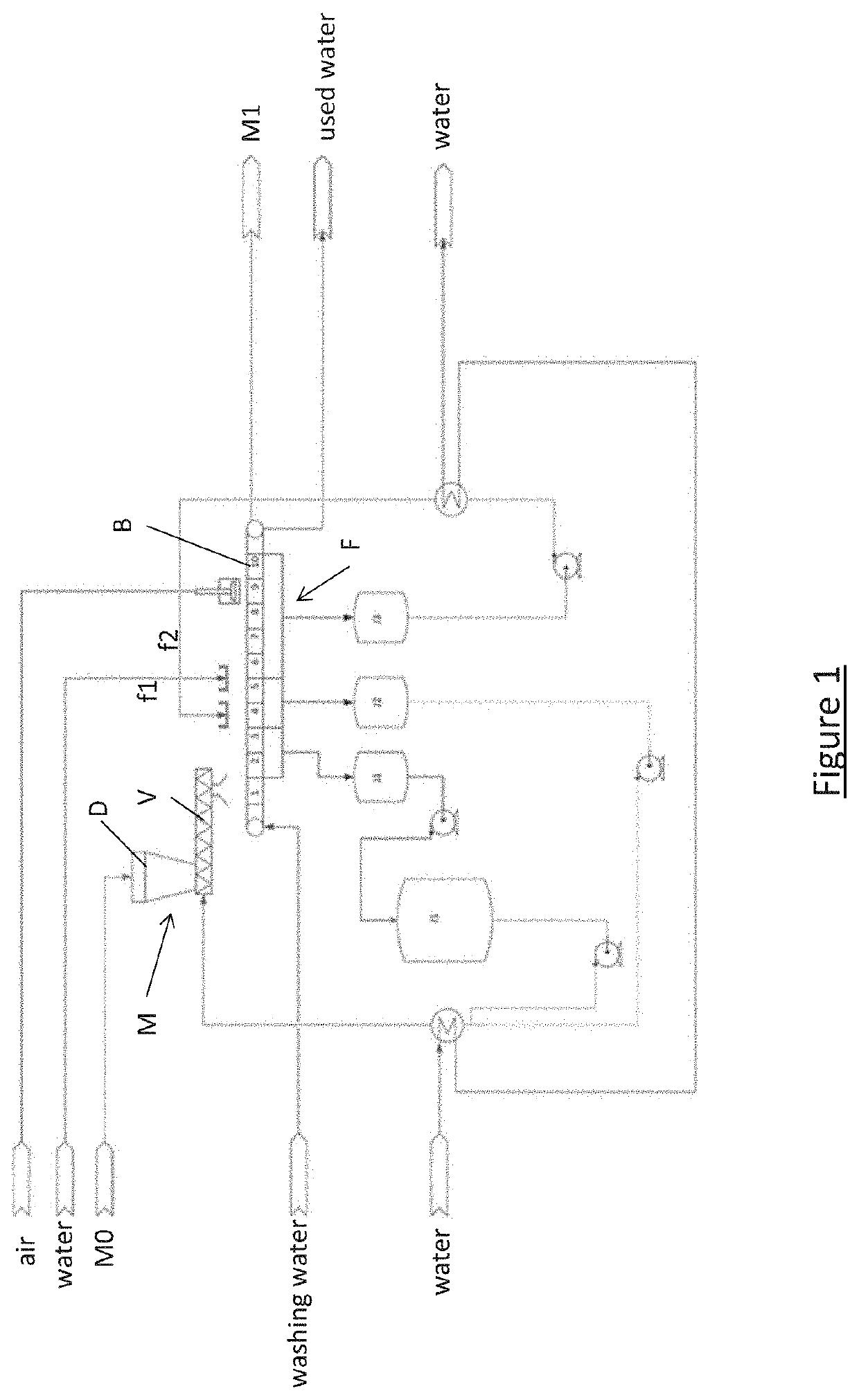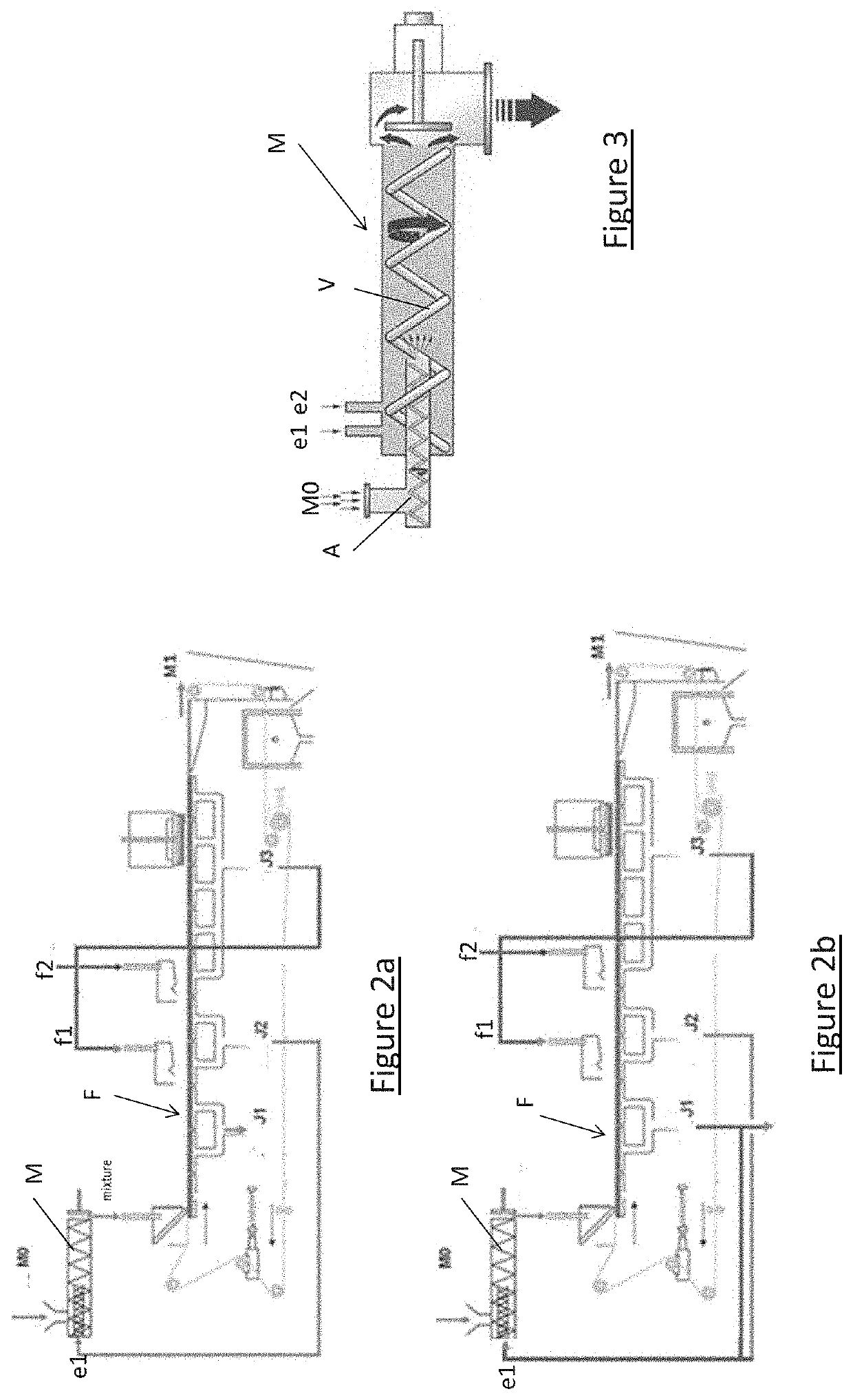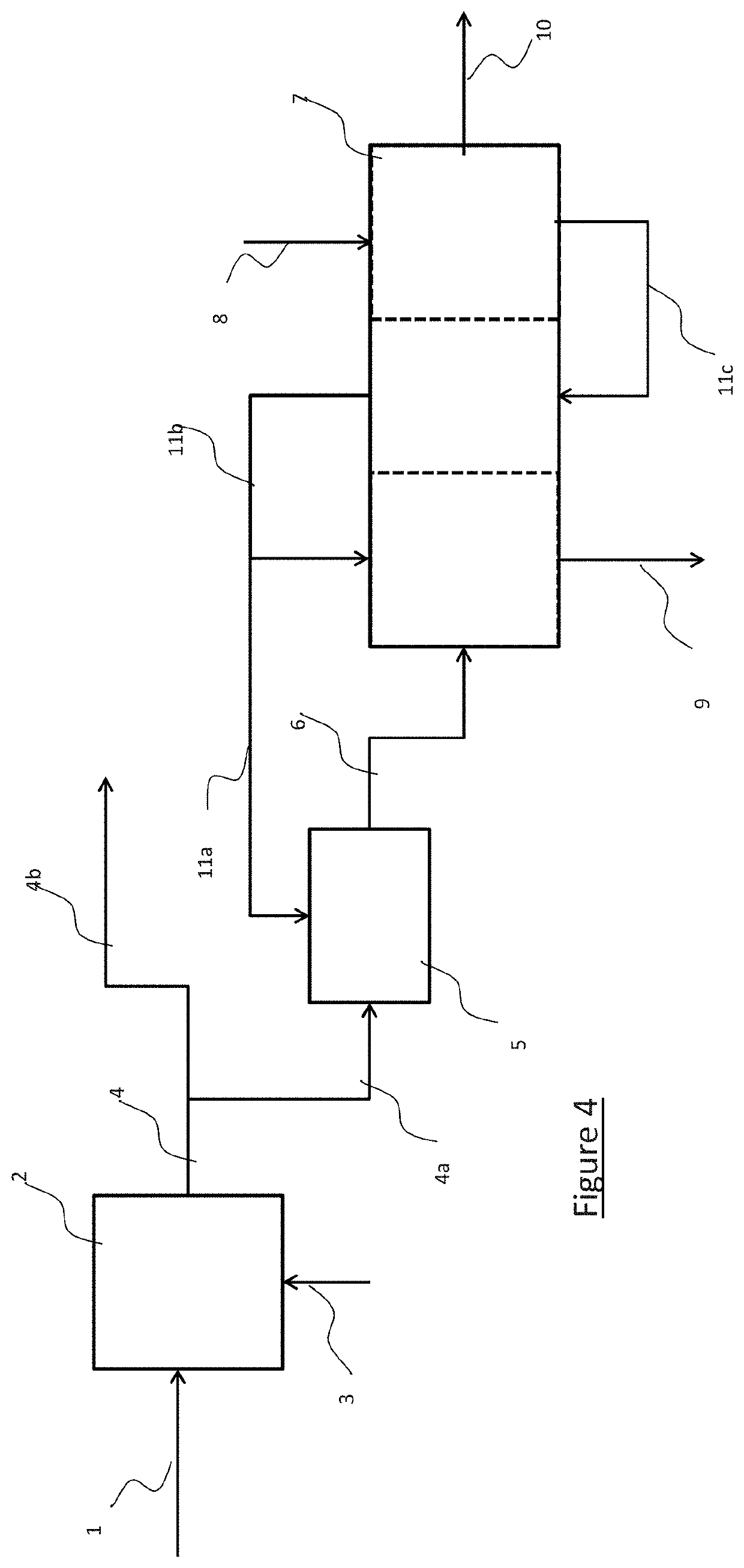Method for treating lignocellulosic biomass
- Summary
- Abstract
- Description
- Claims
- Application Information
AI Technical Summary
Benefits of technology
Problems solved by technology
Method used
Image
Examples
implementation examples
[0134]These examples follow the process schemes and the equipment detailed with the aid of the preceding figures.
[0135]Three examples will be described, on five different types of biomass: example 1 on SRC (short-rotation coppice), example 2 on Miscanthus, and example 3 on straw, Example 4 on another straw configuration, and Example 5 on another configuration on SRC.
[0136]The object is to obtain sugary liquors J1 with a minimum sugar concentration of 50 g / kg.
[0137]In the examples described below, the abbreviation “DM” denotes the dry matter content which is measured according to the standard ASTM E1756-08(2015) “Standard Test Method for Determination of Total Solids in Biomass”.
[0138]The operating conditions are as follows:
[0139]The mixer M is a Parimix IMR continuous mixer, which allows repulping of marcs with high contents of dry matter (DM) and solids. It is heated by electric means to about 40-50° C.
[0140]Separation on the belt filter F, such as the BFR continuous belt filter fr...
example 1
According to the Invention: Biomass Based on Short-Rotation Coppice (SRC)
[0157]The tests began with an SRC, which is often considered as a raw material that is difficult to process. To improve the extraction, spraying nozzles were installed, a vacuum of −0.6 bar was overall material balance and the operating conditions are detailed in table 3 above.
TABLE 3UnitsSRC(2)Straw (2)SRCStrawMiscanthusFlow rate M0kg / h5050505070Flow rate recycled J2kg / h1101107511090Flow rate recycled J1kg / h20200200Flow rate at outletkg / h180180125180160of the mixer MFeed times1917191715Vacuum pressurebar−0.6−0.45−0.6−0.45−0.15Pressing pressurebar——3.33.72.6Temperature J1)° C.4045394532Flow ratekg / h6750457055Temperature J2° C.8080757575after exchangerFlow rate J2kg / h751107511590producedTemperature J3° C.8080757575after exchangerFlow rate J3kg / h751056010580Flow rate ofkg / h7069558355washing waterTempérature° C.5050505050Temperature ofwashing waterTemperature M1° C.2635403545Flow rate M1kg / h6065605292
Example 2 Acc...
example 3
According to the Invention: Biomass Based on Straw
[0160]The first test on straw was performed with the same configuration as for the two preceding examples. Consequently, liquor J1 has a low sugar concentration, of 38.77 g / kg. To increase it, recycling of J1 (20 kg / h) into the J2 tank was established and the mixture of the liquors J1 and J2 was heated and recycled into the mixer M. To improve the vacuum and close the cake which had a tendency to crack, the first washing nozzle was by spraying (zone 4) and the second by overflow (zone 6). Specifically, 70 kg / h of liquor J1 at 53-57 g / kg of sugars were produced. The operating conditions are detailed in the preceding table 4.
PUM
| Property | Measurement | Unit |
|---|---|---|
| Temperature | aaaaa | aaaaa |
| Temperature | aaaaa | aaaaa |
| Temperature | aaaaa | aaaaa |
Abstract
Description
Claims
Application Information
 Login to View More
Login to View More - R&D
- Intellectual Property
- Life Sciences
- Materials
- Tech Scout
- Unparalleled Data Quality
- Higher Quality Content
- 60% Fewer Hallucinations
Browse by: Latest US Patents, China's latest patents, Technical Efficacy Thesaurus, Application Domain, Technology Topic, Popular Technical Reports.
© 2025 PatSnap. All rights reserved.Legal|Privacy policy|Modern Slavery Act Transparency Statement|Sitemap|About US| Contact US: help@patsnap.com



